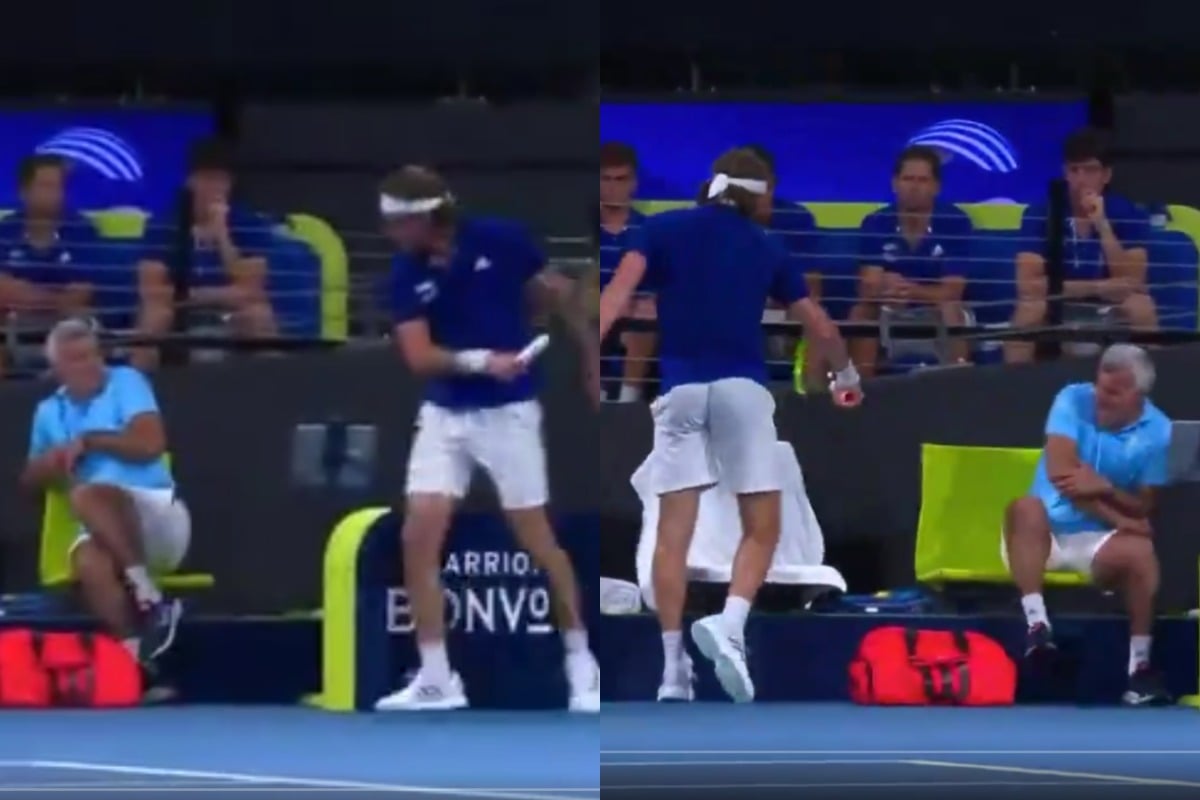
1. Tennis star loses temper and smacks own father with racquet at the ATP Cup in Brisbane.
Aussie Nick Kyrgios has kept his cool to outlast a hot-tempered Stefanos Tsitsipas and seal victory for Australia in their ATP Cup clash with Greece in Brisbane on Tuesday night.
World No.30 Kyrgios returned from injury to claim a 7-6 (9-7) 6-7 (3-7) 7-6 (7-5) win in more than two-and-a-half hours at Pat Rafter Arena that was marred by an extraordinary meltdown by Tsitsipas.
After dropping the first set, the 21-year-old world No.6 slammed his racquet into the bench, accidentally clipping his father and Greece captain Apostolos Tsitsipas on the forearm.
His unimpressed dad walked away briefly before Tsitsipas’s mother Julia emerged from the crowd to stand behind the bench and give her son a dressing down for his behaviour.
Here’s the moment Stefanos Tsitsipas injured his Dad Apostolos when he smashed his racket!!
(@ATPMedia @primevideosport ????) pic.twitter.com/QDLgJlbrOh
— JC ????. (@Joe__Tennis) January 7, 2020
